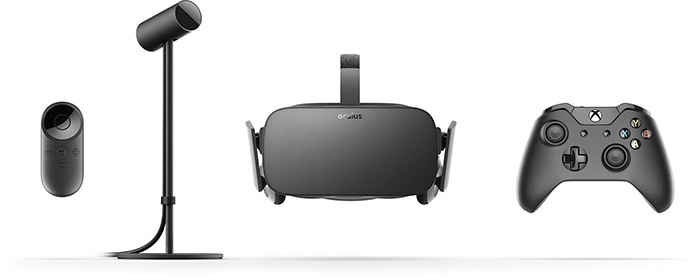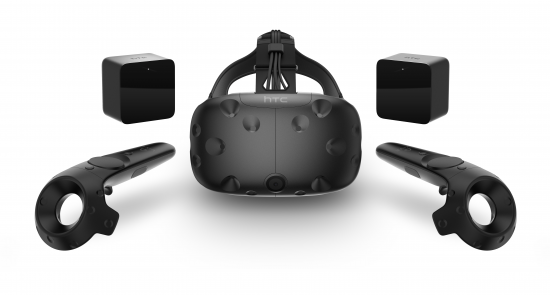
For many people, when they hear “virtual reality” it conjures up thoughts of terrible movies like Johnny Mnemonic or The Lawnmower Man or Nintendo’s short lived game console the Virtual Boy. Half-cocked ideas from the mid-nineties, a time when we just barely started rending 3d graphics on home computers, much less photorealistic, stereoscopic images. Without the graphics horsepower to drive these ideas, they never really got off the ground. But as Moore’s Law brings us more powerful hardware in smaller and smaller packages it’s opened up new possibilities.
So just like Keanu Reeves, we’re on to bigger and better things. We’re ready to trade in our B-movie Johnny Mnemonic for The Matrix and our Virtual Boy for the Oculus Rift. VR isn’t just a gimmick anymore.
VR Headsets
Facebook made headlines last summer after purchasing the VR tech company Oculus VR for 2 BILLION dollars. Occulus VR, famously breaking records raising it’s funds for it’s Occulus Rift headset on Kickstarter, has had developer headsets available since Spring of 2013. The consumer version is set to start shipping at the end of March for those who pre-ordered.

The biggest competitor to the Oculus Rift is the HTC Vive. The developer headset has been available since last summer and its consumer headset is shipping in just a few days. HTC partnered with Valve Software to create a headset that tracked not just your head movements, but also your movement through a whole room.

But that’s not all. Sony and Samsung are also getting into the VR game with Playstation VR and Samsung Gear VR. And the list goes on.
So what can you actually do with this besides watch movies or play games? Will this just be another fad like 3d movies?
Well to start let’s look at how we can expand 2d environments into 3d space:
Take a virtual walkthrough of buildings you create in Revit:
How about editing your models in Maya with a better perspective:
Or have a showroom for your products like Audi:
Augmented Reality Headsets
Microsoft is taking a slightly different route with their Hololens headset. The Hololens is made to enhance the real world with a virtual overlay. Take a look at this demo from last year’s WPC where they show what it’s like to work with Maya using an augmented workstation.
When modifying an existing product, the ability to work with the digital version overlayed on a physical product is going to be a huge shift in design workflow.
Autodesk Software
Right now Autodesk software currently supports VR/AR features on some of it’s products with more to come.
- Use A360 to render stereo panoramas
- VRED has out of the box Oculus Rift support
- Stingray also has native Oculus Rift support with Vive support comming soon
- InfraWorks 360 unofficially supported, but working well
- Fusion 360 working with Hololens
There’s currently a few 3rd party programs that allow VR in Maya, Revit, and others as well.
The applications for using VR are going rival 3d printing. From workflows (working on life size models, additive design on existing physical models, larger virtual workspaces) to client presentations (show them how your product would look in their workspace using AR using just your phone, go on virtual tours of proposed buildings at the actual building site) the way this will let us work may be as big a change as moving from hand drawings to CAD drawings.
